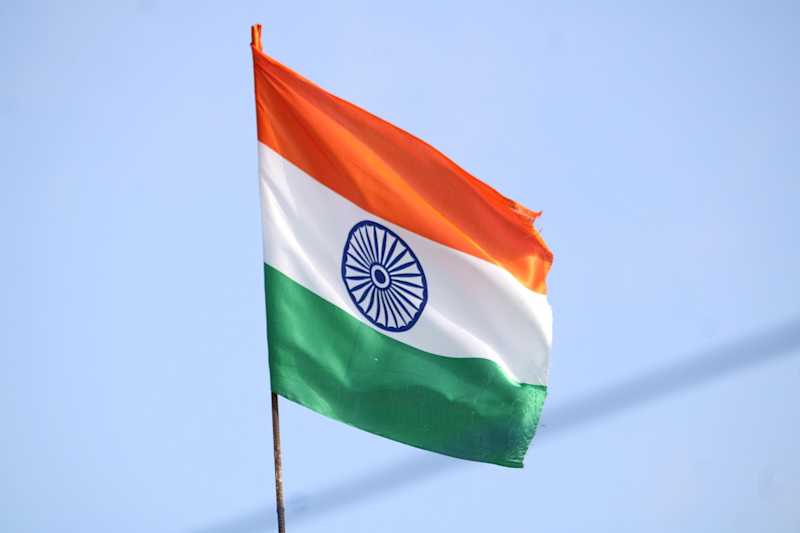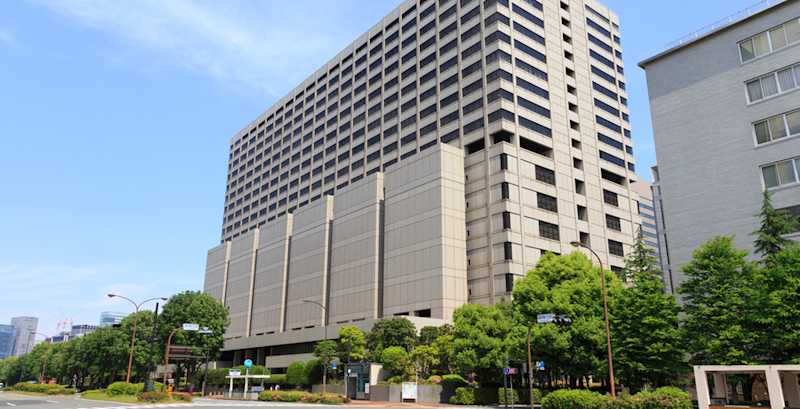German court’s FRAND guidance strengthens SEP holders
Munich’s 7th Chamber has unveiled an approach to SEP disputes that will be welcome to rights holders – but important caveats apply
By Hosea Haag
German judges rarely reveal the broader concepts that shape their approach to the law. Their written decisions typically focus on whether facts were sufficiently proven or arguments persuasive, without disclosing underlying judicial thinking. Publicly, they tend to report on past judgements or avoid comment altogether.
Against this background, the recent order of the 7th Chamber of the Munich Regional Court is remarkable. In one of the ongoing 4G/5G disputes between ZTE and Samsung, Presiding Judge Dr Oliver Schön openly set out his Chamber’s view of key FRAND issues. What emerged was more than procedural guidance: it was a rare glimpse into the Chamber’s economic and legal reasoning. And for patent owners in general — and SEP holders in particular — the message is encouraging.
Key takeaways
The Court seeks to strengthen the position of SEP holders, recognising their role in driving technological development.
It shows a clear understanding of the economics of technology licensing.
It aims to hand down decisions swiftly (within 9–10 months) and to keep enforcement security for non-final decisions at an affordable level.
Foreign courts will not be allowed to interfere with German proceedings.
The guidance
At a FRAND hearing on 10 July 2025 in ZTE v. Samsung, Schön J. delivered an unusually long public introduction of nearly two hours (instead of the usual 20 minutes) before the public was excluded for confidential terms. The Chamber’s views on FRAND were later published in a 16-page guidance[i] which is summarised and analysed in this article.
The background
Almost ten years have passed since the CJEU’s groundbreaking Huawei v. ZTE judgement[ii]. The CJEU envisaged a strict and rather artificial five-step “ping-pong” between SEP holder and implementer. In practice, courts in different jurisdictions have interpreted Huawei v. ZTE more pragmatically, grounded in commercial reality. In Germany the main SEP/FRAND venues — Munich, Mannheim and Düsseldorf — have each developed their own approaches, with only occasional guidance from the Federal Court of Justice, notably in Sisvel v. Haier[iii].
German courts tend to focus on whether the implementer is genuinely willing to take a licence and negotiate in good faith — which they rarely find to be the case. The Munich Higher Regional Court recently placed particular emphasis on the fifth Huawei/ZTE step: security. After (1) the SEP holder’s notice of infringement, (2) the implementer’s declaration of willingness to take a license, (3) the SEP holder’s (FRAND) offer, and (4) the implementer’s counter-offer, the Higher Regional Court in VoiceAge v. HMD[iv] held that unless the Implementer provides a (5) security bond — by bank guarantee or deposit with the public depository (Hinterlegungsstelle) — for a worldwide licence based on the SEP holder’s offer (unless obviously excessive), the Court need not even examine whether the offer was FRAND.
The international dimension
The Court addresses the usual repertoire of manoeuvres seen in SEP/FRAND litigation: royalty-setting proceedings, anti-suit injunctions (ASIs), anti-anti-suit injunctions (AASIs), requests for interim licences, and antitrust complaints. In the dispute between Samsung and ZTE, at least the patent courts in the UK, Germany, the UPC (not a country, but a jurisdiction of its own), China and Brazil are involved. Just weeks before Munich issued its guidance, the UK High Court of Justice delivered a decision against ZTE[v]. It held that if ZTE refused to accept global licence terms set by the UK Court — including an interim licence pending determination — it must be treated as an unwilling licensee, and thus not entitled to competition-law protection against Samsung.
Munich’s response was clear: measures such as ASIs, AASIs, and demands for global interim licences may interfere with national jurisdiction and sideline the courts that are actually competent.
Core positions of the Munich guidance
1. Security and payments
The Court rejects the Higher Regional Court’s strict requirement inVoiceAge v. HMD that an implementer must post a worldwide security bond before FRAND objections are heard. It expects this view will not survive at the Federal Court of Justice.
Once security is provided, the implementer remains obliged to take a FRAND licence. The Court must then examine whether the SEP holder’s offer is FRAND.
Beyond Huawei/ZTE, the Court requires actual payments for undisputed royalties, not just security. (Under the
Orange Book framework, implementers typically provided only three-digit securities as a “reasonable licence fee”, so one may doubt such payments will ever reach substantial amounts.)
2. The Huawei/ZTE framework in practice
The first two notification steps carry little weight; negotiations are what matter.
At step three, the SEP holder’s initial offer need not yet be FRAND — at least one improvement is permitted.
The focus is on the seriousness of the implementer’s efforts: speeding up negotiations, engaging decision-makers, and escalating internally if progress stalls. Delay may be tolerated, but if it amounts to hold-out, it undermines willingness.
3. Determining FRAND terms
FRAND represents a range, not a single number. SEP holders may ask at the upper end, up to the point where access to technology is restricted.
Royalty rates, the Court notes, tend to follow a Gaussian distribution: most in the middle, few very high or very low. An increase of at least 15% over earlier licences is acceptable.
Offers may still qualify as FRAND even if they differ from other licensees’ terms. The guidance suggests — though not without ambiguity — that a spread of up to threefold between lowest and highest agreements can be acceptable.
Comparables are the primary source. Licences granted by the same licensor for the same portfolio carry the greatest weight. Where earlier agreements exist between the same parties, the arguments of the party seeking changes must be well-founded.
Payments for past use carry less weight, since costs cannot be passed on retroactively.
Only compensation after notification of infringement is truly relevant.
4. Calculation methods
Top-down patent counting is rejected. Only comparables provide reliable benchmarks.
Rates should be based on unit prices for an average product, not turnover percentages.
Per-unit royalties are the most transparent. Lump-sum models are also acceptable.
The Court will respect calculation methods agreed by the parties but will conduct a plausibility check against per-unit values.
Discounts for very high volumes are acceptable. Smaller players may therefore gain an advantage, as SEP holders often find litigation costs disproportionate against low-volume implementers.
5. Interim licences
Interim licences are unnecessary. A willing licensee has ample time to reach final terms during proceedings.
Beyond the legal framework, the Court also disclosed economic views that shed light on how the Chamber may decide future cases:
On royalties and incentives
Royalties foster innovation. They should be high.
SEP holders also need royalty income to pursue further infringers.
Patent owners already operate in a system of advance effort. Only 7–10 years after investing in innovation do they typically see returns.
On securities and payments
Securities do not serve the purpose of funding innovation.
Actual payments are necessary. Making use of technology without being licensed is reprehensible.
On FRAND determination
A FRAND rate cannot be set by an independent body. It must emerge from a market-driven process.
The SEP holder cannot be forced to accept the findings of the judiciary, whether from a court or any other state authority. The only relevant test is done by a court and tries the question of whether an offer is FRAND.
Arbitration requests made shortly before a decision is expected are questionable.
On litigation dynamics
Litigation no longer puts real pressure on implementers or sways decision-makers.
While SEP holders can make mistakes, it is often implementers who delay, involve the wrong people or otherwise obstruct negotiations.
On valuation and comparables
Patents can differ greatly in value. A research institute may have a small portfolio of strong patents, while large market players may have the opposite profile.
High handset prices are driven by many factors — brand, camera quality, software — not just SEP technology.
On market behaviour
Implementers may seek to secure market share with cheaper products before taking a licence.
Implementers sometimes follow what the Court calls ‘hard-cookie-strategy’: by resisting licensing vigorously, they hope other SEP holders will back off.
Different conditions for different licensees can be justified.
On German enforcement
Court proceedings typically last 9–10 months.
The injunction remains the core of German patent protection.
Germany is essential for SEP holders, since enforcement is realistically possible in only a small number of jurisdictions.
Foreign decisions
The guidance makes clear that foreign court decisions neither bind nor influence German proceedings. Divergent outcomes are a normal expression of sovereignty. As long as foreign courts do not attempt to influence proceedings in Germany, there is no issue.
If, however, foreign proceedings — not only decisions — coerce a party into procedural consequences in Germany, the German courts will intervene, for example by AASIs. Some commentators suggest that if a non-German court were asked to render decisions extending to German territory, this could be treated as so un-FRANDly that the antitrust defence would not even be considered. Whether this in turn could reopen the door to preliminary injunctions — a reminder of times when German Courts occasionally granted ex parte injunctions within weeks – was not explicitly stated. . It would surely be worth trying for a SEP-holder with an appetite to shape case law.
The Court does not refer to the decision BSH Hausgeräte v. Electrolux of the CJEU[vi], which confirmed that European courts (and on that basis also the UPC) may decide on infringements of national parts of patents outside the actual jurisdiction of the seised national court. It can be assumed that the Munich Court does not intend to contradict the CJEU. A possible way to reconcile the two is to note that asking a court to rule on infringement of another national part of a patent cannot be coercion, as it still places the question of infringement before a competent court. By contrast, demanding a worldwide licence or requesting an ASI operates indirectly: it bypasses the assessment of infringement in the competent court and thus undermines its competence.
The Court also stressed that if an implementer requests rate-setting abroad, it is bound by its own application: the offered royalty must already be paid to the SEP holder. Finally, the guidance criticises the UK High Court’s attempt to draw jurisdiction into the UK and to impose a global settlement. Yet, because the UK High Court itself confirmed that each jurisdiction remains independent, Munich viewed the decision as just within the acceptable line. Should factual pressure be applied to the parties, however, that assessment could quickly change.
Enforcement security
The guidance also addresses security for the enforcement of non-final first-instance decisions. Normally, this security is calculated on the basis of figures provided by the defendant for the damages that enforcement might cause. The Court rejects this approach.
In German practice, each patent in a litigation campaign is pursued in separate proceedings. This means that for every patent the security would be the same — effectively, the total expected damages from a sales ban in each case. For larger portfolios, the Court considers it only a question of how many proceedings are needed until an injunction ultimately issues.
The guidance therefore suggests calculating enforcement security by reference to the cost risks of the number of proceedings required to compel the implementer to take a licence. Given that German security amounts for cost risks are almost always in the lower six-digit range — while a sales ban could easily be valued in the nine-digit range — this is a striking part of the Court’s guidance.
Implementer’s checklist
According to the Court, factors indicating genuine willingness to license include:
Prompt disclosure of quantities relevant to the standard.
Extent to which the implementer took other licensor’s licenses: there is a marked difference between an implementer that already holds licences for more than 50% of SEPs in a standard and one with few or none.
Provision of security in line with established practice.
Payment of undisputed portions of royalties without delay.
Early offer of binding arbitration, provided sufficient negotiations have first been conducted.
Involvement of decision-makers in negotiations, rather than delegating to individuals without authority.
Caveats
The guidance provides significant insight into the Chamber’s thinking on FRAND issues, and much of what it says will be encouraging to SEP owners. That said, there are some important caveats to keep in mind:
This is the decision of one Chamber, not the entire Court.
The guidance departs from the Munich Higher Regional Court and even diverges from CJEU case law when obliging the implementer to pay undisputed royalties. The Chamber sets out lengthy reasoning, perhaps anticipating a referral.
A Court willing to adopt strong, unorthodox positions may also create risks at unexpected points.
The economic reasoning in parts of the guidance remains somewhat blurred.
The analysis appears written with the assumption of large portfolios, where the owner will ultimately prevail. Its applicability to smaller portfolios — relying on only a few well-charted assets — is less certain.
Hosea Haag is partner at AMPERSAND in Munich.
The opinions expressed within this article are the author’s own and do not necessarily reflect the views of Sisvel. The content is for informational purposes and should not be taken as legal advice.
[i] 14 July 2025, 7 O 64/25; 7 O 2750/25
[ii] 16 July 2015, C-170/13
[iii] FRAND I, 5 May 2020, KZR 36/17; FRAND II, 26 November 2020, KZR 35/17
[iv] 20 March 2025, 6 U 3824/22
[v] [2025] EWHC 1432 (Pat), 25 June 2025
[vi] 25 February 2025, C‑339/22


